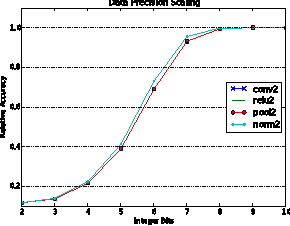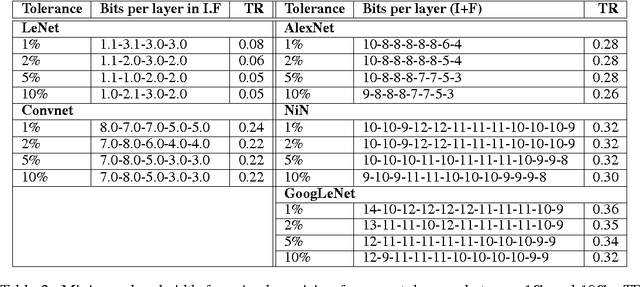Reduced-Precision Strategies for Bounded Memory in Deep Neural Nets
Paper and Code
Jan 08, 2016



This work investigates how using reduced precision data in Convolutional Neural Networks (CNNs) affects network accuracy during classification. More specifically, this study considers networks where each layer may use different precision data. Our key result is the observation that the tolerance of CNNs to reduced precision data not only varies across networks, a well established observation, but also within networks. Tuning precision per layer is appealing as it could enable energy and performance improvements. In this paper we study how error tolerance across layers varies and propose a method for finding a low precision configuration for a network while maintaining high accuracy. A diverse set of CNNs is analyzed showing that compared to a conventional implementation using a 32-bit floating-point representation for all layers, and with less than 1% loss in relative accuracy, the data footprint required by these networks can be reduced by an average of 74% and up to 92%.
 Add to Chrome
Add to Chrome Add to Firefox
Add to Firefox Add to Edge
Add to Edge